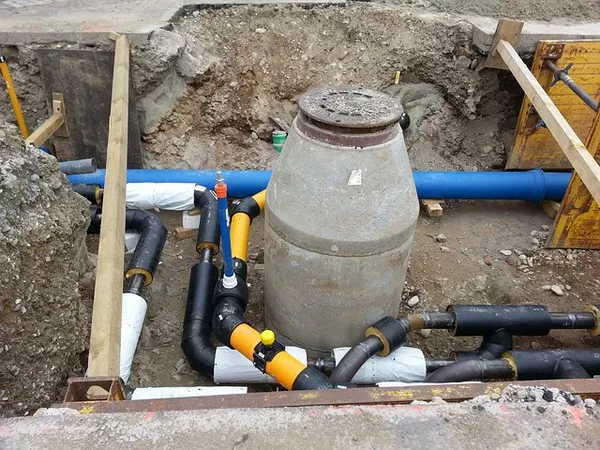The presence of wastewater treatment plants (WWTPs) is critical to modern urban infrastructure, ensuring that sewage and industrial waste are processed in a manner that protects public health and the environment. As urban areas expand, the proximity of residential zones to these facilities is increasing, raising concerns about the safety and impact of living near WWTPs. This article delves into various aspects of this issue, examining potential health risks, environmental impacts, regulatory standards, and mitigation measures to provide a comprehensive understanding of whether it is safe to live next to a wastewater treatment plant.
Understanding Wastewater Treatment Plants
Wastewater treatment plants are facilities designed to clean and process sewage and industrial effluent before it is discharged into the environment. The treatment process typically involves several stages:
Preliminary Treatment: Removal of large solids and debris.
Primary Treatment: Sedimentation to remove suspended solids.
Secondary Treatment: Biological processes to degrade organic matter.
Tertiary Treatment: Advanced filtration and disinfection to remove remaining contaminants and pathogens.
These processes are essential for protecting water quality, preventing waterborne diseases, and supporting ecosystem health.
Potential Health Risks
Living near a WWTP can raise concerns about exposure to pollutants and health risks. These concerns generally fall into three categories: air quality, water quality, and noise pollution.
Air Quality: WWTPs can emit odors and airborne pollutants, including volatile organic compounds (VOCs), hydrogen sulfide (H₂S), and other gases. While modern plants are equipped with odor control systems, occasional releases can still occur, causing discomfort and potential respiratory issues for nearby residents. Chronic exposure to low levels of certain pollutants has been linked to respiratory conditions and other health problems.
Water Quality: A well-functioning WWTP should effectively remove harmful contaminants from wastewater. However, there is always a risk of accidental spills or leaks, which can contaminate local water bodies and groundwater. Such incidents can pose significant health risks, particularly if the contamination involves pathogens or hazardous chemicals.
Noise Pollution: WWTPs can generate noise from machinery, pumps, and other equipment. While this is typically managed through soundproofing and operational controls, excessive noise can be a concern for nearby residents, potentially leading to stress and sleep disturbances.
Environmental Impact
The environmental impact of living near a WWTP primarily involves water and soil contamination, as well as effects on local wildlife and ecosystems.
Water Contamination: Accidental discharges or overflows from WWTPs can introduce pollutants into rivers, lakes, and coastal waters. These pollutants can include nutrients (e.g., nitrogen and phosphorus) that cause eutrophication, heavy metals, pharmaceuticals, and microplastics. Such contamination can harm aquatic life, disrupt ecosystems, and pose risks to human health if the water is used for drinking or recreation.
Soil Contamination: Overflows and leaks can also affect the soil, potentially leading to the accumulation of harmful substances. This can impact local agriculture, gardens, and natural vegetation.
Biodiversity: WWTPs can influence local biodiversity. The presence of a WWTP can alter habitats and potentially affect the distribution and health of local flora and fauna. However, well-managed plants with green spaces can also support biodiversity by providing habitats for certain species.
Regulatory Standards and Safety Measures
To mitigate the potential risks associated with living near a WWTP, stringent regulatory standards and safety measures are in place. These regulations ensure that WWTPs operate within safe limits and protect public health and the environment.
Air Quality Regulations: Emission limits for pollutants, regular monitoring, and the implementation of odor control technologies are mandated to minimize air quality impacts. These measures are enforced by environmental protection agencies.
Water Quality Standards: Discharge permits and standards for treated effluent are established to ensure that water released from WWTPs does not harm the environment or public health. Regular monitoring and reporting are required to maintain compliance.
Noise Control: Regulations often specify allowable noise levels for WWTPs, and plants are required to implement noise mitigation strategies, such as soundproofing and operational adjustments.
Risk Management Plans: WWTPs must develop and implement risk management plans to address potential spills, leaks, and other emergencies. These plans typically include regular inspections, maintenance, and emergency response protocols.
Community Engagement and Perception
Community engagement is crucial for addressing the concerns of residents living near WWTPs. Effective communication and transparency can help build trust and alleviate fears. Many WWTPs engage with local communities through public meetings, informational campaigns, and facility tours. These initiatives provide residents with information about the plant’s operations, safety measures, and environmental performance.
Mitigation Strategies for Residents
Residents living near WWTPs can take several steps to mitigate potential risks:
Stay Informed: Keep abreast of WWTP operations, regulatory compliance, and any incidents. Engage with local authorities and WWTP management to voice concerns and seek information.
Air Quality Monitoring: Use home air quality monitors to detect any changes in air quality and report any significant issues to local authorities.
Water Quality Testing: Regularly test well water or local water sources for contaminants, especially if using them for drinking or irrigation.
Noise Reduction Measures: Implement soundproofing measures at home, such as double-glazing windows and using noise-canceling materials.
See Also How to Control pH in Water Treatment
Conclusion
The safety of living next to a wastewater treatment plant depends on several factors, including the plant’s management, regulatory compliance, and the effectiveness of safety measures. While there are potential health and environmental risks, these can be significantly mitigated through stringent regulations, modern technology, and proactive community engagement.
Ultimately, with proper management and oversight, living near a WWTP can be safe. However, it requires ongoing vigilance and collaboration between residents, plant operators, and regulatory bodies to ensure that risks are minimized and any issues are promptly addressed. By fostering a transparent and communicative relationship, communities and WWTPs can coexist harmoniously, contributing to the overall goal of sustainable and healthy urban living.

